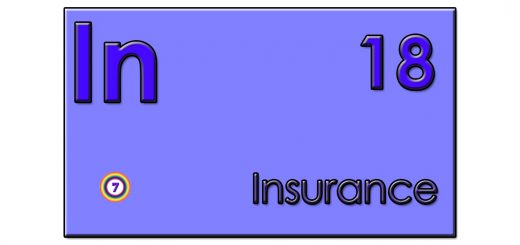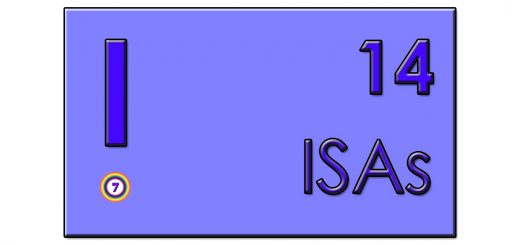Bonds and P2P – Elements 23

This post is part of the Elements series, a Periodic Table of all the Investing Elements that you need to take control of your financial life. You can find the rest of the posts here.
Bonds and P2P
What is it?
Bonds and P2P are the forms of debt most commonly used by Private Investors in the UK.
Debt is the asset class most commonly used as an alternative to Equities (stocks):
- Instead of earning a share in a company that entitles you to some of its future profits, you lend money – to a government, company or an individual – in return for regular payments of interest.
- The interest may be fixed, or it may be index-linked (usually to inflation).
- At the end of the loan’s term, your initial investment is repaid.
- Debt generally provides lower returns than stocks, but more importantly, the returns are not closely correlated to those of equities.
- Often, when stocks fall, bonds will rise in value.
- Bonds can therefore provide diversification away from stocks, leading to a more stable and less volatile sequence of returns.
Bonds are debts to governments and companies, whilst P2P lending platforms (such as Zopa, RateSetter and Funding Circle) allow you to loan money directly to individuals.
- These loans are usually unsecured (ie. there is no collateral provided against the loan), but there is an emerging category of lenders – know as asset-backed lending – where there is some security.
I’ve included P2P lending alongside bonds in order make clear the risks associated with P2P.
- Many investors treat P2P as though it were a high interest savings account.
- But there is a real risk that you could lose money.
- P2P lending shouldn’t make up more than 5% to 10% of your net worth.
What kind of element is it?
Bonds and P2P lending are part of the Debt asset class – a subdivision of financial assets.
Who needs it?
Everybody needs some degree of diversification away from stocks, and for most people, bonds will be the main alternative.
At certain times – such as today, when bonds are at the end of 30-year bull market, and interest rates may be about to rise – bonds may not be attractive.
In this situation, holding cash is a useful alternative to bonds.
P2P is largely unaffected by bond yields and interest rates, and can form a small part of your portfolio under almost any conditions.
What comes before it?
Like all investments, the first steps are to get together:
- a financial plan of where you want to get to
- a budget to show that you will have spare cash to save each year
- and some financial statements to show where you are on your journey
You’ll also need to pay off your own debts – it makes no sense to borrow money in order to lend it to somebody else – and build up an emergency cash fund.
And since the primary purpose of bonds and P2P lending is to diversify away from equities, it would make sense if you had already invested in stocks.
What comes after it?
With a portfolio made up of stocks, cash and debt (Bonds and P2P lending), you have the basics in place.
But you can reduce the volatility of your portfolio still further by adding other asset classes such as Private Equity, Hedge Funds, FX, Gold and other commodities.
The other major asset class to consider is Property, both as a diversifier, and as a place to live.
- Each of these will be covered separately in future articles in the Elements series.
What age do you need it from?
For your entire investing career, so ideally from age 25.
What age do you need it until?
Until you decide to convert your investment portfolio into the income from an annuity, if you ever do this.
- So not until age 75 at the earliest.
How much does it cost?
How much you will pay for a bond depends on how you buy it.
- UK government bonds (known as gilts) can be bought directly, and very cheaply, from the National Savings and Investments office (NS&I).
- More normally you would buy a bond through a stockbroker, paying the regular commission.
- You can also access Bonds through ETFs and OEICs.
- P2P lending usually charges an annual fee, often 0.5% pa.
What’s in it?
A bond is a debt that lasts for a fixed amount of time (the term) and pays a set amount of interest (known as a coupon) at fixed intervals (often annually or twice a year).
- So you could have a 10-year bond that pays 2% a year.
- This might be called the 2027 2% bond (2027 being the year it matures, and investors are repaid the principal).
As market interest rates fluctuate, the price of a bond will change.
- This means that if you buy the bond in the secondary market, it’s price could be 95p or 105p, rather than the 100p at which it was issued.
- This in turn means that the yield on the bond can be higher or lower than the 2% in the bond’s name.
What does a good one look like?
The quality of a bond depends on the reliability of the issuer.
- Thus in general government bonds are higher quality than company bonds.
- This is not always the case though, especially where government bonds are issued in a currency that the government doesn’t control (in dollars, say, or as with bonds from the euro zone.
The risk that the issuer will default is known as counterparty risk.
- Firms like Moody’s, Fitch and Standard & Poor’s rate the capacity borrowers to “meet their financial commitments”.
On most P2P platforms, borrowers will be grouped by their credit ratings, with the riskiest borrowers forced to pay a higher rate of interest.
What does a bad one look like?
A “bad” bond will have a low credit rating; a “bad” P2P borrower will be placed in a higher risk category.
Any recommended brands?
For a UK investor, the obvious bonds to buy directly are UK government bonds.
- Many investors will prefer to use ETFs of OEICs to access bonds, and there are many brands available in this space.
The leading P2P platforms in the UK are Zopa, Funding Circle and RateSetter
- As the largest platforms, they should have liquidity advantages over their competitors.
What are the main risks?
Apart from counterparty risk (discussed above) bonds have three main risks:
- Inflation will erode the interest coupon on the bond
- Interest rate rises will make the value of the bond fall, so that the yield to new purchasers of the bond will increase
- Liquidity risk, particularly for corporate bonds
P2P loans will be impacted by inflation, but not by interest rate increases (since the loans are not generally traded in a market).
- P2P loans are illiquid by nature, since they cannot usually be traded at a sensible price
How do you deal with these risks?
As with many risks, your primary protection is a well-diversified portfolio.
- Bonds, P2P loans and cash will together normally make up less than a third of your portfolio.
Historically, a 60% equities / 40% bonds portfolio was used as the industry standard, but with retirement now likely to last twenty or thirty years, most investors will prefer a higher allocation to equities.
Bonds are more attractive investments when inflation is low and interest rates are more likely to fall than to rise.
- When interest rates are increasing, you might prefer cash to bonds
- When inflation is high or rising, you might prefer real assets (property, gold and commodities) or equities to bonds.
Liquidity risk can be avoided by using ETFs / OEICs to access corporate bonds.
Until next time.
















